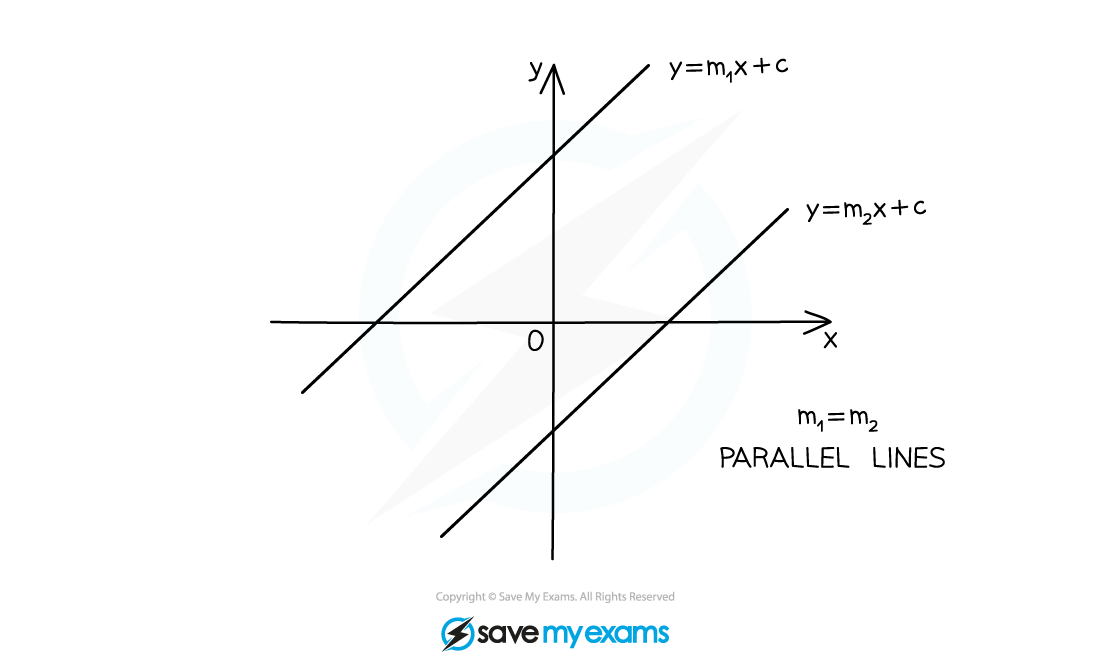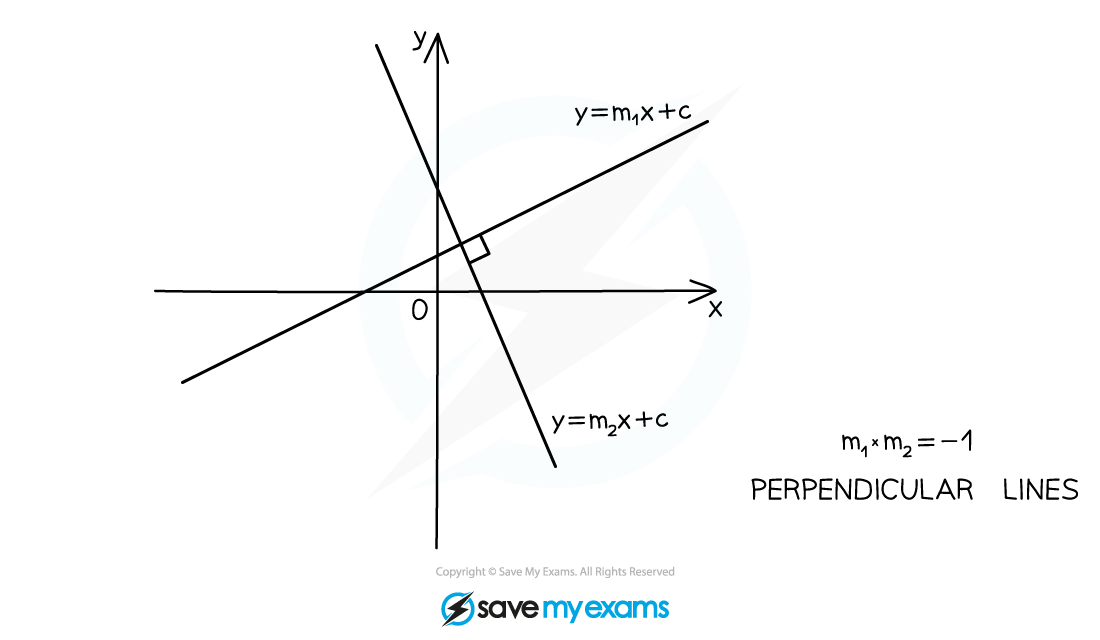Parallel & Perpendicular Lines (DP IB Analysis & Approaches (AA)): Revision Note
Did this video help you?
Parallel lines
How are the equations of parallel lines connected?
Parallel lines are always equidistant meaning they never intersect
Parallel lines have the same gradient
If gradient of line
is
and gradient of line
is
,
To determine if two lines are parallel:
Rearrange into the gradient-intercept form,
Compare the coefficients of
If they are equal then the lines are parallel

Worked Example
The line passes through the point
and is parallel to the line with equation
.
Find the equation of , giving your answer in the form
.

Did this video help you?
Perpendicular lines
How are the equations of perpendicular lines connected?
Perpendicular lines intersect at right angles
The gradients of two perpendicular lines are negative reciprocals
If gradient of line
is
and gradient of line
is
,
For example, if
and
then the lines are perpendicular
If
and
then the lines are not perpendicular
To determine if two lines are perpendicular:
Rearrange into the gradient-intercept form,
Compare the values of
for each
If the product of the two values of
is -1, then they are perpendicular
Be careful with horizontal and vertical lines
and
are perpendicular where
and
are constants

Worked Example
The line is given by the equation
.
The line is given by the equation
.
Determine whether and
are perpendicular. Give a reason for your answer.


You've read 0 of your 5 free revision notes this week
Unlock more, it's free!
Did this page help you?